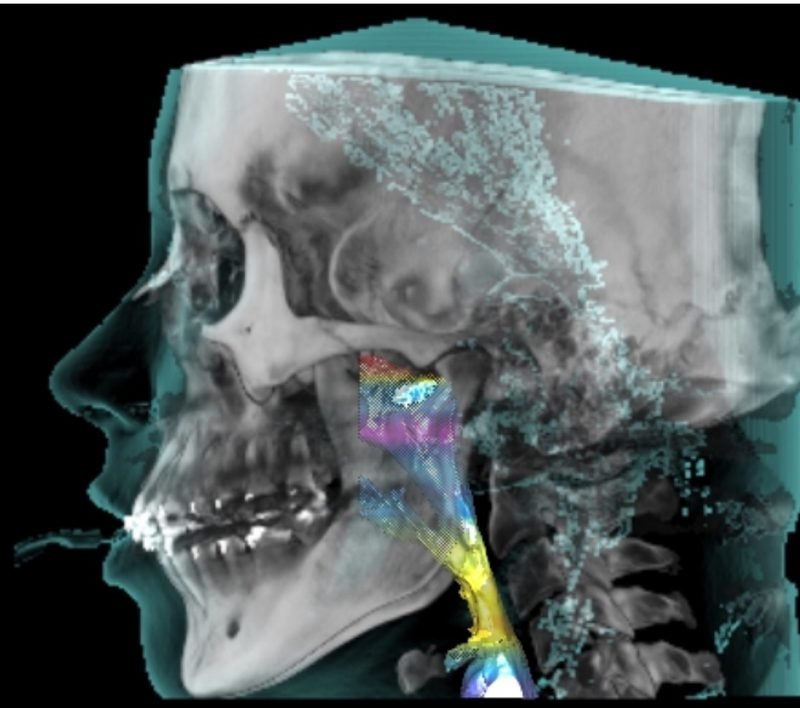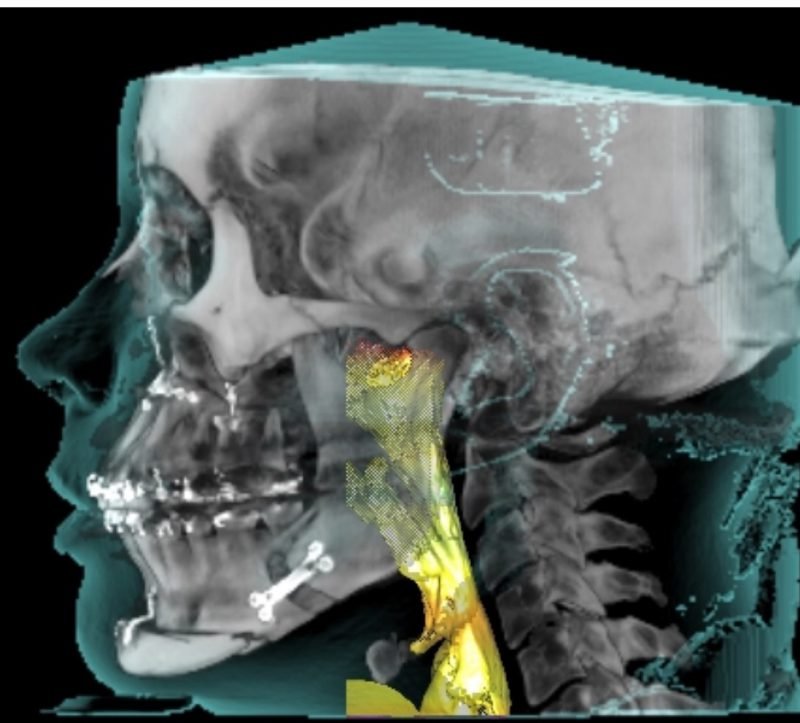
Sleep Apnea
People with obstructive sleep apnea (OSA) have disrupted sleep and low blood oxygen levels. When obstructive sleep apnea occurs, the tongue is sucked against the back of the throat. This blocks the upper airway and airflow stops. When the oxygen level in the brain becomes low enough, the sleeper partially awakens, the obstruction in the throat clears, and the flow of air starts again, usually with a loud gasp.
Repeated cycles of decreased oxygenation lead to very serious cardiovascular problems. Additionally, these individuals suffer from excessive daytime sleepiness, depression, and loss of concentration.
Some patients have obstructions that are less severe called Upper Airway Resistance Syndrome (UARS). In either case, the individuals suffer many of the same symptoms.
The first step in treatment resides in recognition of the symptoms and seeking appropriate consultation. Oral and maxillofacial surgeons offer consultation and treatment options.
In addition to a detailed history, the doctors will assess the anatomic relationships in the maxillofacial region. With cephalometic (skull x-ray) analysis, the doctors can ascertain the level of obstruction. Sometimes a naso-pharyngeal exam is done with a flexible fiber-optic camera. To confirm the amount of cardiovascular compromise and decreased oxygenation levels, a sleep study may be recommended to monitor an individual overnight.
Treatment Options


There are several treatment options available. An initial treatment may consist of using a nasal CPAP machine that delivers pressurized oxygen through a nasal mask to limit obstruction at night. One of the surgical options is an uvulo-palato-pharyngo-plasty (UPPP), which is performed in the back of the soft palate and throat. A similar procedure is sometimes done with the assistance of a laser and is called a laser assisted uvulo-palato-plasty (LAUPP). In other cases, a radio-frequency probe is utilized to tighten the soft palate. These procedures are usually performed under light IV sedation in the office.
In more complex cases, the bones of the upper and lower jaw may be repositioned to increase the size of the airway (orthognathic surgery). This procedure is done in the hospital under general anesthesia and requires a one to two day overnight stay in the hospital.
OSA is a very serious condition that needs careful attention and treatment. Most major medical plans offer coverage for diagnosis and treatment.
Dallas Surgical Arts offers Sleep Apnea treatments for patients in Dallas TX and surrounding areas. Call (972) 914-3660 today.
-
Patient FocusedYour comfort and care is at the top of our list. Our team makes it a point to provide each patient with top notch care.
-
Comprehensive ApproachSpecializing in oral maxillofacial surgery as well as reconstructive surgery allows us to accomplish your overall goals.
-
Individualized CareWe treat each of our patients as an individual, and provide care according to their specific needs.
-
Innovative TechnologyWe are cutting-edge and use the most advanced technology and techniques.

-
“Thank Dallas Surgical Arts for a staff that is phenomenal!”
Amy H. -
“I look forward to more outstanding results.”
Roslyn G. -
“Will most definitely return here if I need anything else done in the future. <3”
Heather M. -
“The experience could not have gone more smoothly.”
Alexandra C. -
“We would for sure be back for any other needs and are so thankful for Dr. Sanovich and his staff!”
Laura M.


